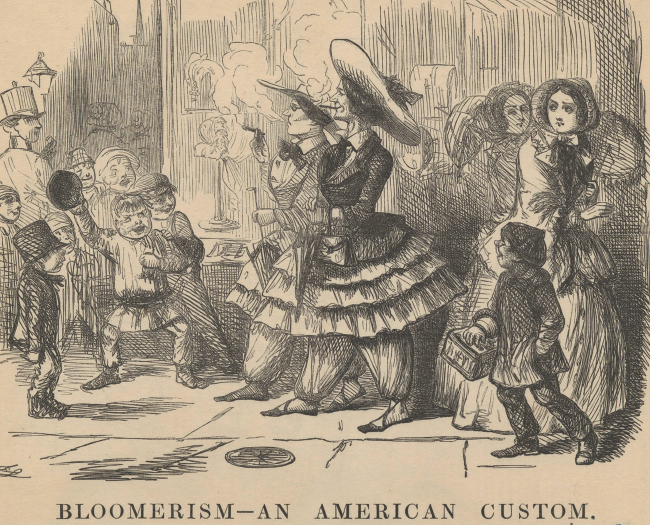Woman’s Rights Activists.
Printed Page 327 Chapter Chronology
Woman's Rights Activists. Women participated in the many reform activities that grew out of evangelical churches. Women church members outnumbered men two to one and worked to put their religious ideas into practice by joining peace, temperance, antislavery, and other societies. Involvement in reform organizations gave a few women activists practical experience in such political arts as speaking in public, running a meeting, drafting resolutions, and circulating petitions.
In 1848, about three hundred reformers led by Elizabeth Cady Stanton and Lucretia Mott gathered at Seneca Falls, New York, for the first national woman's rights convention in the United States. As Stanton recalled, "The general discontent I felt with women's portion as wife, mother, housekeeper, physician, and spiritual guide, [and] the wearied anxious look of the majority of women impressed me with a strong feeling that some active measure should be taken to right the wrongs of society in general, and of women in particular." The Seneca Falls Declaration of Sentiments set an ambitious agenda to demand civil liberties for women and to right the wrongs of society. The declaration proclaimed that "the history of mankind is a history of repeated injuries and usurpations on the part of man toward woman, having in direct object the establishment of an absolute tyranny over her." In the style of the Declaration of Independence, the Seneca Falls declaration demanded that women "have immediate admission to all the rights and privileges which belong to them as citizens of the United States," particularly the "inalienable right to the elective franchise."
Seneca Falls Declaration of Sentiments
Declaration issued in 1848 at the first national woman's rights convention in the United States, which was held in Seneca Falls, New York. The document adopted the style of the Declaration of Independence and demanded equal rights for women, including the franchise.

Nearly two dozen other woman's rights conventions assembled before 1860, repeatedly calling for suffrage and an end to discrimination against women. But women had difficulty receiving a respectful hearing, much less achieving legislative action. Even so, the Seneca Falls declaration served as a pathbreaking manifesto of dissent against male supremacy and of support for woman suffrage, and it inspired many women to challenge the barriers that limited their opportunities.
Stanton and other activists sought fair pay and expanded employment opportunities for women by appealing to free-labor ideology. Woman's rights advocate Paula Wright Davis urged Americans to stop discriminating against able and enterprising women: "Let [women] ...open a Store, ...learn any of the lighter mechanical Trades, ...study for a Profession, ...be called to the lecture-room, [and] ...the Temperance rostrum ...[and] let her be appointed [to serve in the Post Office]." Some women pioneered in these and many other occupations during the 1840s and 1850s. Woman's rights activists also succeeded in protecting married women's rights to their own wages and property in New York in 1860. But discrimination against women persisted, as most men believed that free-labor ideology required no compromise of male supremacy.